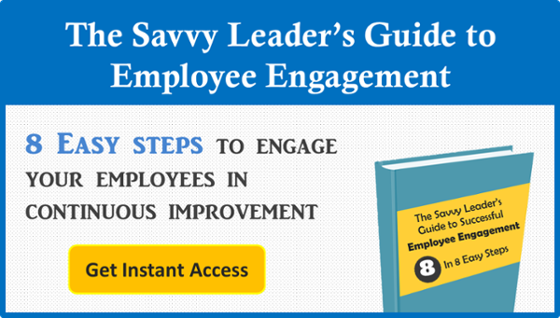 There's nothing like the start of a new year to focus one's thoughts upon what you have achieved and new challenges you’d like to tackle in the new year. If you are like many, there may be a wide variety of improvements made within your organization.
There's nothing like the start of a new year to focus one's thoughts upon what you have achieved and new challenges you’d like to tackle in the new year. If you are like many, there may be a wide variety of improvements made within your organization.
But let me ask you this, are these random acts of improvement or are they focused efforts that have enabled your organization to make a significantly favorable strategic shift in performance? If your answer is the former, perhaps your improvement system needs a framework.
Developing an intentional framework for improvement engages people at all levels of the organization in focusing their efforts on making changes that impact the strategic goals of your organization.
Listen to the post (subscribe to the podcast):
I met with a client this past month after sending him a draft copy of a new criteria being developed by Baldrige. A few weeks after I sent it, he emailed me to set up a meeting. I figured we would spend a lot of the time catching up on his improvement efforts followed by a brief dismissal of the criteria; telling me that it was simply too complex to be useful. My assumption was based on experience with clients who are initially exposed to the criteria; most dismiss the questions and the implications of the answers to their business operation.
Was I ever wrong; within minutes of my arrival he was telling me that the Baldrige approach to improvement was exactly the holistic approach he had been looking for to focus and balance his improvement efforts. While his department and the processes they managed were integrated with almost every department across the organization (senior management, customer service, human resources, and operations), he lacked a meaningful framework that would integrate these processes and focus improvement efforts to achieve process improvement in a more strategic context.
We spent the rest of the morning, going over the Baldrige framework and how he could begin using it within his current continuous improvement processes. I realized that he had reached a level of organizational maturity where he no longer had the resources to devote to random acts of improvement. He needed a framework that caused him to look at the organization from a bigger perspective and develop improvement strategies that would move the needle. While he had the same resources he always had, the use of the framework would make sure that he optimized his efforts on things that were important to the organization's success and made a meaningful contribution to results of key measures within the organization. He no longer was focused on innovation for innovation’s sake; he needed a framework that would focus his organization’s continuous improvement efforts and enable them to make significant improvement in a vital few areas that would create the most impact.
How about you? As you consider your past years’ improvement efforts in your organization, do you find that they are focused in only a few areas with glaring gaps? Are there departments that don't seem to be participating? Are there areas such as customer service, human resources, operations, or management that don't seem to be engaged in the improvement process? Few processes operate in a single department without handoffs and the value derived from full participation may deliver significant benefits. Full deployment of continuous improvement efforts can drive engagement, focus resources to achieve a common goal and can generate synergy within an organization that can be leveraged to drive performance to new levels. Perhaps you would benefit from a framework such as the Baldrige Criteria for Performance Excellence.
The Baldrige Criteria can be used as a framework for any continuous improvement methodology. It is applicable to any industry type or size organization. You can find a wide variety of resources here, including a self assessment tool that can be used to get you started.
About the Author:
Sam Turner is the founder of Baldrige Success Strategies, a consulting firm that provides unique business and professional resources to Baldrige-based organizations which create a strategic advantage through their development, deployment and continued use.
His career spans across almost every area of an organization from distribution, to operations, customer service, administrative and marketing, and he is currently a Tennessee Center for Performance Excellence (TNCPE) Board Examiner and member of the TNCPE Panel of Judges.



Add a Comment